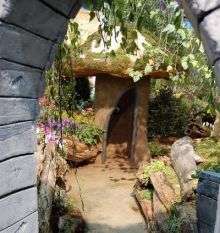Children's gardens mushrooming

Researchers have discovered the secrets to enhancing youth participation in school- and community-based garden programs. A 3-year study entitled “Greener Voices” proves that children will engage in learning more readily when given responsibility for decisionmaking and planning.
Children’s gardens have mushroomed during the past two decades. Gardens are popping up in schools, communities, public venues, and informal settings. Despite recent interest in gardening with children, little credence has been given to what children think about the experience: what interests them, how they may be involved in decisionmaking and planning, and how they can benefit from their involvement.
“Adults make many assumptions about children and gardening, and instead of enlisting the creativity and innovative thinking of young people, they often involve children in the more mundane tasks of planting, weeding, and watering” notes Marcia Eames-Sheavly, lead researcher and Senior Extension Associate at Cornell University’s Garden-Based Learning Program.
Researchers set out to understand how children and youth engaged in project planning and to gain a better grasp of the constraints faced by adults who teach and design gardening programs. “We learned that ongoing efforts are needed to assist sites and the adult leaders who work there, including strategies to expand thinking about the capabilities of children and youth, to help children and youth adjust to new roles, and to identify ways for younger children to increase their participation”, added Eames-Sheavly.
The study will impact educators working with children, and ultimately impact the experience of children in garden settings, making those experiences more interesting, relevant, and compelling. Results of the 3-year project are being disseminated through in-service trainings, conferences, colleagues, and web-based materials.
Summarizing the project’s impact, Eames-Sheavly enthused, “In an era in which there is grave concern over a lack of young peoples’ engagement with nature, children’s gardens offer a way in which children and youth can interact with the natural world.”
Source: American Society for Horticultural Science





















